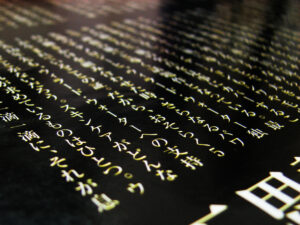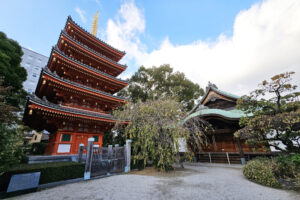The phrase "Land of the Rising Sun" has become synonymous with Japan, encapsulating the nation’s identity, culture, and historical significance. This term, which highlights Japan’s geographical position to the east of the Asian continent, serves as a potent symbol of hope, renewal, and national pride. In this article, we will explore the multifaceted significance of this phrase, delving into its historical roots, cultural implications, and the ongoing relevance it holds for Japan today.
Understanding the Phrase ‘Land of the Rising Sun’ in Japan
The term "Land of the Rising Sun" translates from the Japanese word "Nihon" (日本) or "Nippon," which literally means "origin of the sun." This phrase reflects Japan’s geographical position, as it is one of the first places to see the sunrise each day. The symbolism of the rising sun extends beyond mere geography; it embodies the spirit of innovation, resilience, and a forward-looking attitude that characterizes the Japanese people. The association with dawn provides a metaphorical representation of new beginnings and endless possibilities.
In Japanese culture, the sun is revered as a powerful symbol of life and vitality. Its daily journey across the sky has inspired countless artistic expressions, philosophical musings, and spiritual beliefs. The rising sun is often depicted in artwork, literature, and traditional rituals, reinforcing its status as a national emblem. As Japan continues to evolve, the concept of being the "Land of the Rising Sun" serves as a reminder of its enduring heritage and the optimism that defines the nation’s worldview.
The phrase has also been embraced in Japan’s national branding. It appears on various official documents, government seals, and even in tourism campaigns aimed at showcasing Japan’s unique culture and scenic beauty. The phrase resonates deeply with both locals and visitors, providing a sense of connection to the past while looking forward to the future. It serves as a bridge that links generations, intertwining historical significance with contemporary relevance.
Moreover, the phrase has transcended its literal meaning, becoming a metaphor for Japan’s societal values. The rising sun symbolizes hope and unity, encouraging citizens to work together for a brighter future. In times of adversity, the phrase has inspired resilience and tenacity among the Japanese people, reinforcing their collective identity as a nation that rises to meet challenges head-on.
In an increasingly interconnected world, the term "Land of the Rising Sun" also plays a role in Japan’s international relations. It has become a point of reference in diplomacy, trade, and cultural exchange, reflecting Japan’s aspirations to be a leader on the global stage. The phrase encapsulates the spirit of collaboration and coexistence that Japan seeks to foster with other nations.
Overall, the phrase "Land of the Rising Sun" is more than just a geographical descriptor; it is a potent symbol that encompasses Japan’s identity, values, and aspirations. The layers of meaning that surround this term reveal the depth of Japan’s cultural heritage and its enduring significance in an ever-changing world.
Historical Roots: The Origin of the Term in Japanese Culture
The term "Land of the Rising Sun" has its roots in Japan’s ancient history, tracing back to early Chinese records. The earliest references can be found in texts dating back to the 7th century, where Japan is referred to as "the country where the sun rises." This acknowledgment from neighboring nations highlights Japan’s geographical significance and its emerging identity as a distinct nation.
Japanese mythology also contributes to the historical roots of this phrase. The sun goddess Amaterasu is one of the most revered deities in Shinto, Japan’s indigenous religion. According to mythology, Amaterasu descended from the heavens and brought light to the world, representing the spirit of renewal and creation. The veneration of Amaterasu has reinforced the cultural significance of the sun throughout Japan’s history and is often seen as a divine endorsement of Japan’s identity as the "Land of the Rising Sun."
During the Nara period (710-794), Japan began to formalize its national identity, and the phrase gained prominence in diplomatic relations with China. By positioning itself as the "Land of the Rising Sun," Japan distinguished itself from its continental neighbors, fostering a sense of pride and independence. The term became a cornerstone of Japan’s emerging national consciousness, setting the stage for its future as a sovereign state.
In the centuries that followed, the phrase was further solidified in the national lexicon through literature and poetry. Works from influential poets and writers often referenced the sun, drawing parallels between its rising and the hopes of the Japanese people. This literary tradition helped cultivate a collective identity that celebrated the beauty and power of the sun, intertwining it with the cultural narrative of Japan.
The Edo period (1603-1868) marked a time of relative peace and stability, during which the concept of the "Land of the Rising Sun" was widely embraced across all levels of society. This period saw the flourishing of arts and crafts, with themes of the sun frequently depicted in paintings, textiles, and ceramics. The aesthetic appreciation of the rising sun further solidified its status as a national symbol, making it an integral part of Japanese culture.
By the late 19th century, the phrase "Land of the Rising Sun" had become firmly entrenched in Japan’s national identity, especially during the Meiji Restoration. As Japan sought to modernize and assert itself on the world stage, the term served as a rallying cry, inspiring a sense of unity and purpose among its citizens. The historical roots of this phrase reveal how it has evolved alongside Japan, echoing its journey through time and its aspirations for the future.
Symbolism of the Rising Sun: A National Identity
The rising sun symbolizes more than just Japan’s geographical location; it encapsulates the essence of national identity. Throughout history, the image of the sun has been intricately woven into the fabric of Japanese culture, representing themes of hope, renewal, and perseverance. The sun’s daily ascent serves as a metaphor for life’s cyclical nature, reminding the Japanese people of the resilience and strength inherent in their character.
In the context of national identity, the rising sun embodies the spirit of unity among the diverse regions and cultures that make up Japan. Each part of the nation has its own customs and traditions, yet they are all united under the banner of the rising sun. This sense of belonging fosters a collective consciousness that transcends individual differences, encouraging citizens to work together for a common goal.
Furthermore, the rising sun represents the values of innovation and progress that are deeply ingrained in Japanese society. The ability to adapt and rise above challenges is a central tenet of the Japanese ethos. This resilience is reflected in the nation’s post-war recovery, where the rising sun became a symbol of hope for a brighter future. The phrase continues to inspire generations, reminding them of their potential to overcome adversity and achieve greatness.
The national identity shaped by the rising sun is also evident in Japan’s arts and literature. Various artistic expressions, from traditional calligraphy to contemporary design, often incorporate sun motifs, reinforcing the cultural significance of this imagery. In literature, the sun is frequently used as a symbol of enlightenment, representing knowledge, truth, and the pursuit of dreams. These artistic representations serve to solidify the rising sun as a cornerstone of Japan’s cultural heritage.
The concept of the rising sun extends into the realm of international relations as well. Japan’s national identity, rooted in the symbolism of the rising sun, influences its diplomatic approach and engagement with other nations. The country seeks to project an image of peace, cooperation, and collaboration on the global stage, further enhancing its reputation as a thoughtful and progressive nation.
As Japan continues to navigate the complexities of the modern world, the rising sun remains a powerful symbol of its national identity. It reflects the enduring spirit of the Japanese people, reminding them of their rich cultural heritage while inspiring them to embrace the future with optimism and determination.
How Japan Became the ‘Land of the Rising Sun’
Japan’s journey to becoming the "Land of the Rising Sun" is a tale interwoven with history, mythology, and cultural evolution. The transformation began with Japan’s early interactions with China, where the term was first popularized due to geographical recognition. As the nation developed its unique identity, it began to embrace the phrase as a symbol of strength and resilience.
During the early periods of Japanese history, emperors and leaders utilized the imagery of the rising sun to project power and legitimacy. This was particularly evident during the Nara and Heian periods (794-1185), when the imperial court emphasized its divine lineage and connection to the sun goddess Amaterasu. The association with the sun not only reinforced the emperor’s authority but also laid the groundwork for a national identity that resonated with the populace.
Japan’s fierce independence and isolationist policies during the Edo period further solidified the concept of the "Land of the Rising Sun." As the nation closed its borders to foreign influences, it cultivated a sense of pride in its unique cultural heritage. The phrase became emblematic of this isolationist mindset, representing a nation that was self-sufficient and rich in traditions, art, and philosophy.
The Meiji Restoration in 1868 marked a significant turning point in Japan’s history, as the nation sought to modernize and assert itself on the global stage. During this period, the phrase gained renewed importance, symbolizing Japan’s aspirations to rise as a formidable power in the international arena. The government adopted the rising sun as a national emblem, further entrenching its significance in the collective consciousness of the people.
As Japan emerged as an industrial power in the early 20th century, the phrase "Land of the Rising Sun" was utilized in various diplomatic engagements and international forums. The image of the rising sun became synonymous with Japan’s progress and modernization, showcasing the nation as a beacon of innovation and development. This new identity played a crucial role in reshaping the global perception of Japan, making it a respected player on the world stage.
However, Japan’s tumultuous experiences during World War II complicated its relationship with the phrase. While the rising sun served as a symbol of national pride, it was also co-opted for militaristic purposes. The post-war period saw a re-evaluation of the phrase’s significance, leading to a renewed focus on peace, reconciliation, and cooperation. Today, Japan continues to embrace the "Land of the Rising Sun" as a representation of its cultural heritage and aspirations for a harmonious future.
The Cultural Impact of the Rising Sun on Japanese Art
The imagery of the rising sun has left an indelible mark on Japanese art, manifesting in various forms ranging from traditional paintings to contemporary designs. Artists throughout history have drawn inspiration from the sun’s symbolism, creating works that encapsulate its beauty, power, and significance. This artistic expression has played a vital role in shaping Japan’s cultural landscape.
One of the most prominent art forms featuring the rising sun is ukiyo-e, a genre of woodblock prints that flourished during the Edo period. Artists like Katsushika Hokusai and Utagawa Hiroshige often incorporated sun motifs into their landscapes, using the sun to evoke emotions and convey narratives. The interplay of light and shadow in these prints not only highlights the sun’s visual impact but also communicates deeper themes of transience and the beauty of nature.
In traditional Japanese painting, the rising sun has been utilized as a central motif in many works depicting seasonal changes and natural landscapes. Artists often portrayed the sun rising over mountains or across bodies of water, symbolizing renewal and the cyclical nature of life. These works serve as a reminder of Japan’s profound connection to nature and the importance of harmony between humanity and the environment.
The influence of the rising sun extends into contemporary art as well. Modern Japanese artists continue to explore and reinterpret the symbolism of the sun, often blending traditional techniques with innovative approaches. The rising sun remains a potent source of inspiration, as artists seek to express their identities and experiences within the context of a rapidly changing world.
Beyond visual arts, the rising sun’s impact can also be seen in Japanese literature and poetry. The imagery of dawn and the sun’s ascent frequently appears in literary works, symbolizing hope, renewal, and new beginnings. Writers and poets have harnessed the sun’s symbolism to articulate their thoughts on life, love, and the human experience, reinforcing its significance within the cultural narrative.
Furthermore, the impact of the rising sun on Japanese art is evident in design and architecture. Traditional motifs featuring the sun are often incorporated into textiles, ceramics, and even modern architecture, serving as a testament to the enduring relevance of this symbol. The rising sun continues to be celebrated in contemporary design, embodying the fusion of tradition and modernity that characterizes Japan’s artistic landscape.
In summary, the cultural impact of the rising sun on Japanese art is profound and multifaceted. From traditional practices to contemporary expressions, the sun’s symbolism has shaped the artistic narrative of Japan, reflecting the nation’s values, beliefs, and aspirations throughout history.
The Rising Sun Flag: Controversy and National Pride
The Rising Sun Flag, a red circle on a white background with radiating rays, has become an iconic representation of Japan. While the flag is steeped in historical significance and national pride, it has also sparked controversy and debate, particularly in the context of Japan’s wartime past. Understanding the complexities surrounding the Rising Sun Flag requires an examination of its historical origins and the emotions it evokes.
The flag’s design dates back to the Edo period, where it was used by the Japanese navy and later adopted as a national flag during the Meiji era. The rising sun emblem embodies Japan’s aspirations for progress and modernization, symbolizing the nation’s emergence as a formidable power in the late 19th and early 20th centuries. For many Japanese citizens, the flag represents resilience, unity, and a deep connection to their cultural heritage.
However, the flag’s association with Japan’s militaristic expansion during World War II has led to significant controversy. The Rising Sun Flag was used by the Imperial Japanese Army and Navy, becoming a symbol of aggression and colonialism in Asia. As a result, many countries that experienced Japanese occupation view the flag with resentment and anger, seeing it as a reminder of past atrocities.
This tension has led to heated debates over the flag’s use in contemporary Japan. While some citizens embrace the flag as a source of national pride, others advocate for its removal in public spaces, arguing that it perpetuates a painful history. This internal struggle reflects a larger conversation about Japan’s identity and its relationship with its past, revealing the complexities of reconciling pride with accountability.
Internationally, the Rising Sun Flag continues to be a contentious symbol. In recent years, its display at sporting events and diplomatic gatherings has sparked protests and calls for its prohibition. Critics argue that the flag remains a potent reminder of oppression, while supporters contend that it is an important aspect of Japan’s identity that should not be erased. This ongoing debate highlights the challenges that arise from symbols deeply rooted in history.
Efforts to navigate the controversy surrounding the Rising Sun Flag have led to discussions about education and awareness. Advocates for reconciliation emphasize the importance of acknowledging Japan’s wartime actions while celebrating its cultural achievements. By fostering open dialogues, Japan can work toward a more nuanced understanding of its history and identity, promoting healing and cooperation with its neighbors.
In summary, the Rising Sun Flag is a symbol rich in meaning, embodying both national pride and historical controversy. As Japan continues to grapple with its past, the flag serves as a focal point for discussions about identity, accountability, and the ongoing pursuit of peace and reconciliation in the region.
Traditions and Festivals Celebrating the Rising Sun
In Japan, the rising sun is not only a national symbol but also a significant element in various traditions and festivals. Throughout the year, numerous events celebrate the sun’s life-giving qualities, reflecting the cultural reverence for this celestial body. These celebrations highlight the deep-rooted connection between the Japanese people and the natural world, emphasizing themes of renewal, gratitude, and harmony.
One of the most significant celebrations is "Hinamatsuri," or Doll’s Day, which takes place on March 3rd. Although primarily a celebration for girls, the festival includes rituals that honor the sun. Families display ornamental dolls representing the emperor and empress, and the day is marked by traditional foods shaped like the sun, symbolizing the hope for prosperity and happiness. The festival serves as a reminder of the sun’s nurturing role in sustaining life and fostering growth.
Another important festival is "Shunbun no Hi," or the Spring Equinox, celebrated around March 20th or 21st. During this time, families visit ancestral graves and offer prayers of gratitude for the warmth and light provided by the sun. People also enjoy picnics under blooming cherry blossoms, symbolizing the beauty of life and the arrival of spring. The connection to the rising sun during this festival underscores the importance of nature in Japanese culture and the appreciation for its seasonal cycles.
The "Obon" festival, held in mid-August, is another occasion that honors the sun’s significance. Obon is a time when families reunite to pay respect to their ancestors, and it is believed that the spirits of the deceased return to the earthly realm during this period. Lanterns are lit to guide these spirits back home, and celebrations often include traditional dances under the moonlight, invoking the sun’s energy for blessings and protection.
One of the most iconic festivals associated with the rising sun is "New Year" or "Shōgatsu." During this celebration, families gather to enjoy traditional foods, reflect on the past year, and welcome the new one with hope and optimism. The first sunrise of the year is often viewed as a sacred moment, with many people climbing mountains or visiting shrines to witness it. This practice embodies the deep cultural significance of the rising sun, symbolizing new beginnings and the potential for growth in the coming year.
The "Tamataregu Matsuri," held in Kumamoto Prefecture, is another festival that highlights the sun’s cultural importance. Celebrated in June, it features a procession of floats and traditional music, culminating in a vibrant display of fireworks that symbolize the sun’s energy. Participants express their wishes for prosperity and success, reinforcing the connection between the rising sun and the aspirations of the community.
In conclusion, traditions and festivals celebrating the rising sun are integral to Japan’s cultural identity. These events not only embody the reverence for nature but also reflect the values of renewal, gratitude, and community that are central to Japanese society. Through these celebrations, the rising sun continues to inspire hope and unity among the Japanese people.
The Role of Nature in Japan’s Rising Sun Symbolism
The symbolism of the rising sun in Japan is deeply intertwined with the natural world, reflecting the nation’s reverence for nature and its cycles. From ancient times, the Japanese have recognized the power of the sun as a vital force for life, growth, and harmony. This connection to nature is not only evident in the nation’s cultural practices but also in its philosophical beliefs.
Japan’s geographical landscape, characterized by mountains, forests, and coastlines, plays a significant role in shaping the symbolism of the rising sun. The sun rises over the rugged terrains of the Japanese archipelago, casting its light on the land and nurturing the flora and fauna. This natural phenomenon has inspired countless poems, paintings, and stories that capture the beauty and vitality of the sun’s presence in the Japanese landscape.
The appreciation for nature is reflected in traditional Japanese aesthetics, where the rising sun is often depicted alongside elements such as cherry blossoms, waves, and mountains. These natural motifs evoke a sense of harmony and balance, emphasizing the interconnectedness of all living things. The rising sun is seen as a source of energy that breathes life into the environment, reinforcing the belief that humans are part of a larger ecosystem.
Shinto, Japan’s indigenous spirituality, further underscores the significance of nature in the symbolism of the rising sun. Shinto practitioners believe that the sun goddess Amaterasu embodies the essence of nature and its life-giving qualities. This belief fosters a deep respect for the natural world, encouraging individuals to cultivate a sense of stewardship toward the environment. The rising








